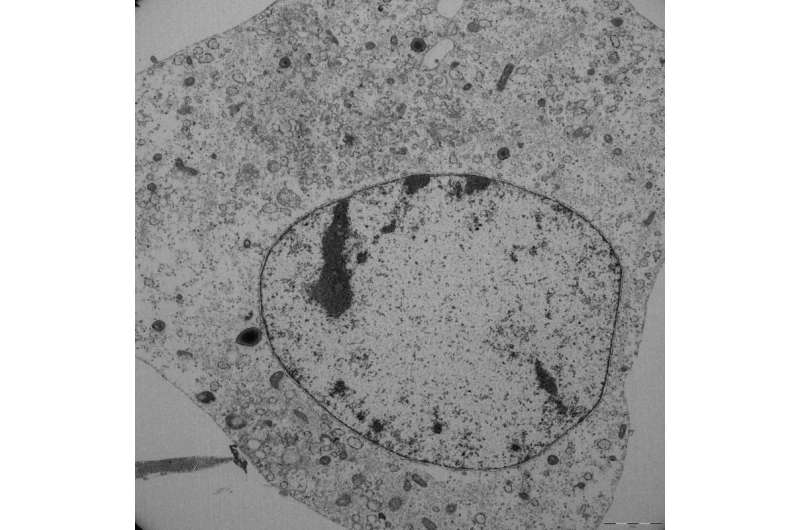How cells die by ferroptosis

Ferroptosis is a recently discovered form of cell death, which is still only partially understood. Scientists at the Helmholtz Zentrum München have now identified an enzyme that plays a key role in generating the signal that initiates cell death. Their findings, published in two articles in the journal Nature Chemical Biology, could now give new impetus to research into the fields of cancer, neurodegeneration and other degenerative diseases.
The term ferroptosis was first coined in 2012. It is derived from the Greek word ptosis, meaning "a fall", and ferrum, the Latin word for iron, and describes a form of regulated necrotic cell death in which iron appears to play an important role. "The individual mechanisms involved in this type of cell death remain only partly understood, and our findings make an important contribution towards a better understanding of ferroptotic cell death," says study leader Dr. Marcus Conrad, who is heading a research group at the Institute of Developmental Genetics at the Helmholtz Zentrum München.
Along with his team and colleagues from the University of Pittsburgh, he was able to show that ACSL4, an enzyme involved in the metabolism of fatty acids, plays a central role in ferroptosis. In order for the lethal mechanism to be triggered, a certain amount of specific oxidized lipid molecules must be present in membranes. "Acsl4 is critically involved in shaping the cellular lipid composition by storing more poly-unsaturated long-chain fatty acids in cellular membranes, thereby providing the starting materials for the generation of the lethal lipid signals driving ferroptosis" explains PhD student Sebastian Doll, first author of one of the two studies. "Previously it was assumed that iron-dependent lipid oxidation occurs randomly; however, our data now demonstrate that ACSL4 centrally contributes to the formation of oxidized lipid death signals in ferroptosis."
Potential applications for the treatment of cancer and neurodegenerative diseases
Although the term 'cell death' is generally viewed as an adverse event and thus has a rather negative image, it has been shown – particularly in the context of cancer – that the selective destruction of aberrant cells is vital for the human body. The scientists therefore examined the role of ACSL4 in this context. They showed that a subset of breast cancer cells (i.e. triple negative breast cancer cells) that do not produce ACSL4 are extremely resistant to ferroptosis, while those that express the enzyme respond very sensitively to ferroptosis induction. "This is a highly interesting finding given the fact that the presence of ACSL4 determines whether or not cells can embark on the ferroptosis pathway" explains Dr. José Pedro Friedmann Angeli, who was centrally involved in both studies. It is thus well conceivable, he says, that the molecule could be used as a biomarker in cancer patient stratification.
The researchers also provided the first molecular approach for targeting ACSL4 in the signalling pathway. In a model experiment using thiazolidinediones, a class of active compounds commonly used in the treatment of diabetes, they succeeded in slowing down the process of ferroptosis.
"Our intriguing insights that the ACSL4 enzyme plays a substantial role in the process of cell death provide novel cues for yet-unrecognized therapeutic approaches towards inhibiting ferroptosis in degenerative diseases or inducing ferroptosis in certain tumor diseases," says study leader Dr. Conrad. In particular, tumors that are otherwise very difficult to treat with standard chemotherapy might be amenable for ferroptosis therapy, the researchers say.
More information: Sebastian Doll et al. ACSL4 dictates ferroptosis sensitivity by shaping cellular lipid composition, Nature Chemical Biology (2016). DOI: 10.1038/nchembio.2239
Valerian E Kagan et al. Oxidized arachidonic and adrenic PEs navigate cells to ferroptosis, Nature Chemical Biology (2016). DOI: 10.1038/nchembio.2238
Journal information: Nature Chemical Biology
Provided by Helmholtz Association of German Research Centres



















